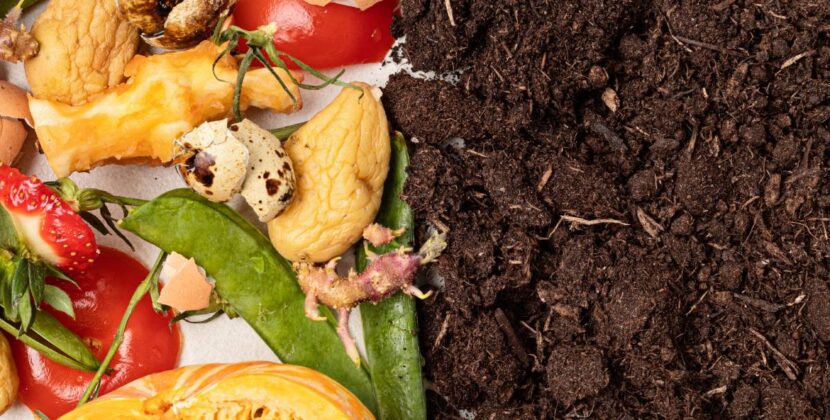Are you tired of tossing kitchen scraps and garden trimmings in the bin, only to see them go to waste? Composting is a fantastic, eco-friendly way to reduce landfill waste and transform your household’s organic material into nutrient-rich soil known affectionately among gardeners as black gold.
If you’ve ever been curious about composting but felt it was too complicated, messy, or required too much space—this beginner-friendly guide is for you. With the right tools and a bit of knowledge, anyone can start composting effectively, whether you’re living in an apartment or on a large property.
Why Compost?
Every year, Australian households throw away thousands of tonnes of organic waste—up to 50% of household bin contents, in fact. This waste includes everything from vegetable peelings to grass clippings and old newspapers. When dumped in landfills, this organic material produces methane—a greenhouse gas far more potent than carbon dioxide.
But when composted, the same waste becomes a valuable resource that:
- Nourishes your soil,
- Reduces the need for chemical fertilisers,
- Helps retain soil moisture,
- Encourages healthy plant growth, and
- Reduces your environmental footprint.
Composting allows you to actively participate in the sustainability cycle, all while saving money and improving your garden’s productivity.
Step 1: Choose the Right Composting Method for Your Space
Your available space will largely determine the most suitable composting method for you.
For Small Spaces (like urban homes or apartments):
- Composting bins are ideal. You can use static compost bins or tumbling composters, which are easier to aerate.
- Electric composters, like the HASS Thailand Food Waste Composter, are great for those looking for a compact, energy-efficient, and odour-free indoor solution. These devices quickly process food scraps using heat and oxygen and are particularly useful for households that generate food waste daily.
For Larger Yards:
- Compost piles or composting bays are the way to go. These systems give you more flexibility in terms of volume and structure. You can even build multi-bay systems to manage compost at different decomposition stages.
- Choose a shaded, well-drained area in your backyard to protect your compost from drying out in direct sun or getting waterlogged in heavy rain.
Step 2: Understand What You Can (and Can’t) Compost
To keep your compost healthy and functioning properly, you need to understand the green-brown balance.
Green Materials (Nitrogen-rich):
- Vegetable and fruit scraps
- Coffee grounds and tea bags
- Crushed eggshells
- Fresh grass clippings
- Green leaves and prunings
- Plant-based kitchen waste
Brown Materials (Carbon-rich):
- Dry leaves
- Straw and hay
- Shredded newspaper and cardboard
- Sawdust (from untreated wood only)
- Twigs and woody stems
- Paper towels and tissues (unscented)
The general rule of thumb is to aim for 2 parts brown to 1 part green to maintain the right balance. Browns provide energy for microbes and help with aeration, while greens provide the nitrogen that microbes need to reproduce and thrive.
What Not to Compost:
- Dairy, meat, or oily foods (they can attract pests and create odours)
- Pet waste (except manure from herbivores like chickens or rabbits)
- Diseased plants
- Glossy or coated paper
- Treated wood or sawdust from treated wood
- Invasive weeds or those with seeds (to avoid reintroducing them into your garden)
While some advanced systems, like HASS Thailand Food Waste Composter, are designed to handle cooked food and meat safely in a sealed, high-temperature environment, it’s still best to check the manufacturer’s guidelines.
Step 3: Build Your Compost – The Right Way
Now that you’ve gathered the right materials, it’s time to layer them for optimal decomposition.
Layering Process:
- Base Layer: Start with coarse materials like twigs, mulch, or old potting mix to promote drainage and air circulation.
- Alternating Layers: Add alternating green and brown layers—kitchen scraps followed by dry leaves or shredded paper.
- Moisture Management: After each layer, lightly water the compost pile to maintain moisture, but avoid oversaturating it.
- Soil or Finished Compost: Top the pile with a layer of soil or existing compost to help introduce beneficial microbes and reduce odour.
The more finely chopped or shredded the materials, the faster they will decompose. If you have the HASS Thailand Food Waste Composter, you don’t have to worry about manually chopping your waste—its integrated shredder breaks food scraps down efficiently.
Step 4: Keep It Aerated
Oxygen is essential for the aerobic bacteria that do the bulk of the composting work. Without enough air, your compost can turn anaerobic, leading to foul smells and a slow decomposition process.
Here’s how to aerate your compost:
- Manual Turning: Use a garden fork or shovel to turn your pile once every 1–2 weeks.
- Air Pipes or Stakes: Insert perforated pipes or garden stakes vertically through the pile to allow airflow.
- Tumbler Bins: If you use a tumbler, rotate it every few days.
Consistent aeration accelerates the composting process and ensures that all parts of your pile decompose evenly.
Step 5: Troubleshooting Common Problems
Composting is generally low-maintenance, but here are a few common issues and how to solve them:
Smelly Compost?
Likely too much green material or excess moisture. Add more browns (dry leaves, cardboard) and turn the pile to improve aeration.
Dry and Inactive Pile?
The compost may be too dry or low in nitrogen. Add more green materials and a bit of water to get it going.
Attracting Pests?
You may be adding food scraps without covering them or adding items like meat or dairy. Always bury kitchen waste under brown layers and avoid adding pest-attracting scraps.
Step 6: Harvest and Use Your Compost
Depending on the size of your compost system, the materials used, and your maintenance routine, compost can take anywhere from 6 weeks to 6 months to fully mature.
How to Know It’s Ready:
- Dark brown to black in colour
- Earthy smell (like forest soil)
- Crumbly texture with no recognisable food scraps
Once it’s ready, your compost can be used in various ways:
- Mix into garden beds as a soil conditioner
- Top-dress your lawn
- Add to potting mixes
- Mulch around shrubs and trees
This black gold enriches soil, improves water retention, and boosts microbial activity—all of which contribute to stronger, healthier plants.
Bonus: Indoor Composting with HASS Thailand Food Waste Composter
For those who live in urban areas or prefer an odourless and hygienic system, the HASS Thailand Food Waste Composter is a smart solution. Designed with energy efficiency and convenience in mind, this electric food composter:
- Shreds and heats waste automatically,
- Deodorises during processing,
- Requires minimal maintenance,
- Reduces food waste volume significantly within hours.
It’s perfect for households that want to contribute to sustainability but lack a traditional garden setup. The resulting by-product is a soil-like material that can be used around ornamental plants or added to outdoor compost bins to boost microbial life.
Final Thoughts: Composting is Simpler Than You Think
Composting isn’t just for gardeners—anyone who cooks, eats, or lives in a home can compost. With a bit of effort and the right method, you can turn everyday waste into a valuable asset for your garden and the planet.
Whether you go with a backyard compost pile, a compact bin on your balcony, or a high-tech solution like the HASS Thailand Food Waste Composter, the benefits of composting are too good to ignore. Not only do you reduce waste, but you also create something that helps plants thrive.
So why wait? Start composting today and transform your trash into treasure—one banana peel, coffee ground, and autumn leaf at a time.






